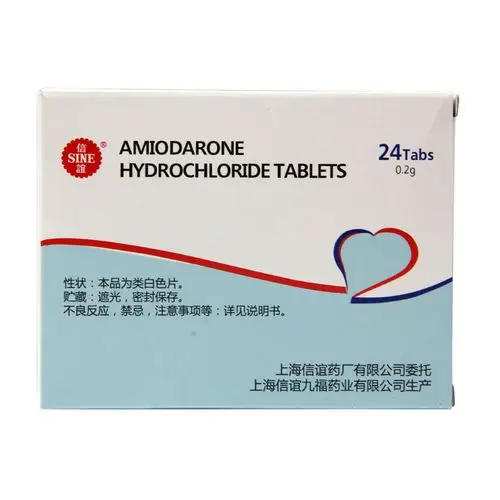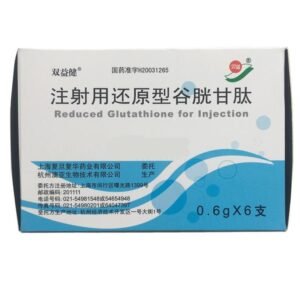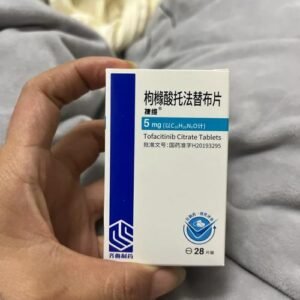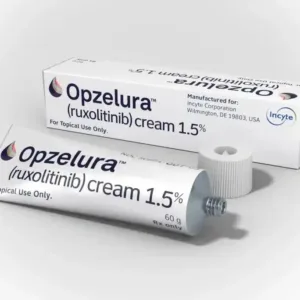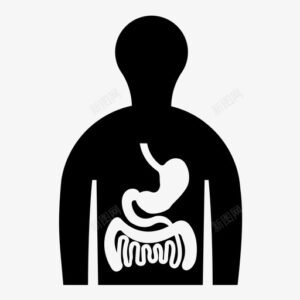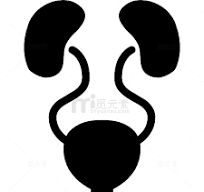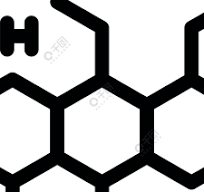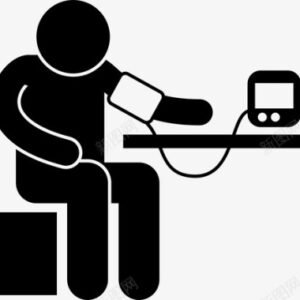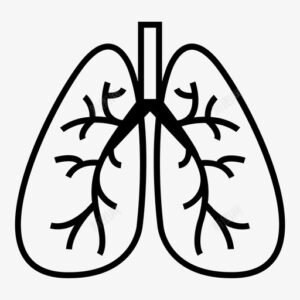Amiodarone hydrochloride 盐酸胺碘酮
Effects and Benefits:
1. Amiodarone Hydrochloride Tablets and Dispersible Tablets: Treat atrial arrhythmias, including converting atrial flutter and atrial fibrillation to normal rhythm and maintaining sinus rhythm after recovery. They address abnormal heart rhythms occurring in the junctional areas of the heart. They control life-threatening premature ventricular contractions and ventricular tachycardia, preventing fatal ventricular arrhythmias or ventricular fibrillation. They treat arrhythmias associated with preexcitation syndrome (WPW), a condition characterized by abnormal electrical signal conduction in the heart. Due to their specific action profile, these dosage forms are suitable for patients with coronary artery disease, cardiac insufficiency, or heart failure. 2. Amiodarone Hydrochloride Capsules: Primarily used to prevent potentially life-threatening, sudden onset ventricular tachycardia and ventricular fibrillation. When other drug treatments are ineffective, they can be used to treat sudden onset supraventricular tachycardia, atrial flutter, and atrial fibrillation, including those associated with WPW. They help control the ventricular rate in persistent atrial fibrillation or flutter. Unless there is a clear treatment indication, it is generally not used for routine treatment of common atrial or ventricular premature beats. III. Amiodarone Hydrochloride Injection: It is used to treat severe arrhythmias when the patient is unable to take oral medication, particularly in the following emergency situations: atrial arrhythmias with a rapid ventricular rate; tachycardia caused by preexcitation syndrome; severe life-threatening ventricular arrhythmias; and cardiac arrest due to ventricular fibrillation that is resistant to defibrillation.
Dosage and Administration:
I. Amiodarone Hydrochloride Tablets and Dispersible Tablets: Initial treatment (loading dose): 600 mg is typically taken daily. This initial dose should be continued for 8-10 days. Subsequent treatment (maintenance dose): The lowest effective dose should be adjusted based on individual needs. In most cases, a daily dose of 100-400 mg is used. Due to the drug’s prolonged effect in the body, 200 mg every other day or 100 mg daily may be used. Some clinical protocols recommend intermittent dosing with two days of drug rest per week. II. Amiodarone Hydrochloride Capsules: Standard Adult Dosage: For the treatment of supraventricular arrhythmias (abnormal electrical activity in the upper chambers of the heart): Take a total of 0.4-0.6 grams of drug in 2-3 divided doses daily. Continue for 1-2 weeks, then adjust to 0.2-0.4 grams daily to maintain efficacy. Some patients can reduce the dose to 0.2 grams daily, or even take the drug five days a week or less. For the treatment of severe ventricular arrhythmias (abnormal electrical activity in the lower chambers of the heart): Take a total of 0.6-1.2 grams of drug in 3 divided doses daily. After 1-2 weeks, gradually adjust to 0.2-0.4 grams (equivalent to 1-2 capsules) daily for maintenance therapy. III. Amiodarone Hydrochloride Injection: Preparation Precautions: At least two injection bottles should be added to 500 ml of liquid. Dilute only with glucose injection. Special Reminder: Do not mix any other drugs with the solution. Central venous administration (through a large vessel close to the heart) is preferred. Based on clinical data, the maximum safe dose for continuous infusion is 0.5 mg/minute, regardless of patient age, renal function, or cardiac function. This dose can be used cautiously for 2-3 weeks. However, there is limited clinical experience with continuous use beyond 3 weeks. Key dosing principles: An initial dose sufficient to control dangerous arrhythmias should be administered based on individual differences, and then the dose should be fine-tuned. A total of 1000 mg of the drug is typically administered over the first 24 hours. The specific administration is as follows: On the first day of treatment: Rapid administration phase: Administer 150 mg of the drug via an infusion pump at a rate of 15 mg/minute over the first 10 minutes. Preparation: Add 3 mL of injection solution (150 mg) to 100 mL of glucose solution. Slow administration phase: Administer 360 mg of the drug at a rate of 1 mg/minute over the next 6 hours. Preparation: Add 18 mL of injection solution (900 mg) to 500 mL of glucose solution. Maintenance phase: Administer 540 mg continuously at a rate of 0.5 mg/minute for the remaining 18 hours. After the first day: Maintain an infusion rate of 0.5 mg/minute (equivalent to 720 mg over 24 hours). If the drug concentration exceeds 2 mg/mL, infusion must be performed through a central venous catheter. Special Situation Management: In the event of ventricular fibrillation (a life-threatening arrhythmia) or ventricular tachycardia with unstable blood flow, a rapid bolus of 150 mg (diluted in 100 mL of dextrose solution) can be administered over 10 minutes. The infusion rate can be adjusted to control the arrhythmia. Emergency Use Guidelines: For cardiac arrest caused by ventricular fibrillation unresponsive to defibrillation: Central venous administration is preferred. If this is not possible, rapid infusion through the largest peripheral vein can be used. The initial intravenous push dose is 300 mg (or 5 mg/kg body weight), diluted in 20 mL of 5% dextrose solution and then administered rapidly. If the arrhythmia does not improve, an additional bolus of 150 mg (or 2.5 mg/kg body weight) can be administered. Mixing with other medications is strictly prohibited. Important Note: Drug inserts may differ between manufacturers. If you find any discrepancies in the inserts before use, please contact your doctor or pharmacist immediately for confirmation.
Contraindications:
Contraindicated if allergic to this product; contraindicated during pregnancy; contraindicated during lactation; use with caution in cases of liver impairment.
Related Dosage Forms:
Tablets, Dispersible Tablets, Capsules, Injection
View More
Share:
Products
Our offers
Health Classification
Let us work together to protect precious health

